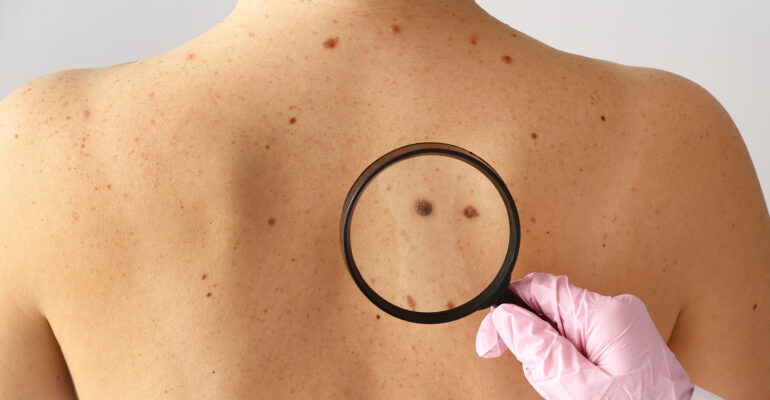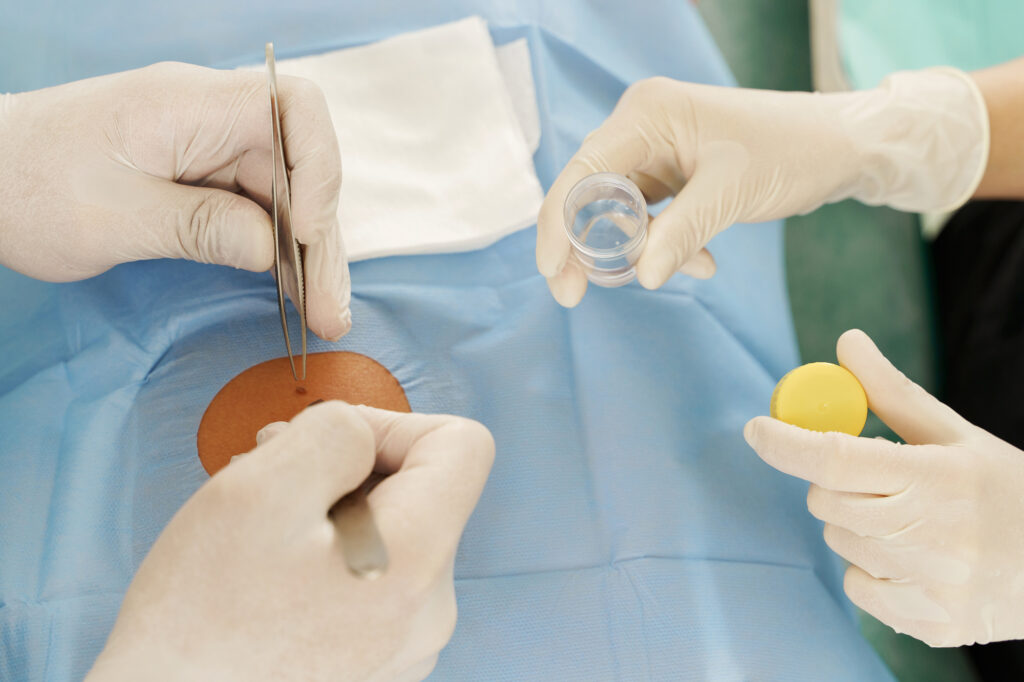What To Expect In A Full Body Skin Cancer Screening: Understanding The Process
May 2, 2024 2024-05-09 10:07What To Expect In A Full Body Skin Cancer Screening: Understanding The Process
As an Amazon associate, Dermatocare earns from valid purchase made by clicking on the affiliate links in this blog.

What To Expect In A Full Body Skin Cancer Screening: Understanding The Process
Spots on your skin? Notice a mole changing? Skin cancer is the most common cancer in the US, but early detection is your best defense. That’s where skin cancer screenings come in.
These quick checkups with a dermatologist—a doctor specializing in skin—can catch suspicious lesions early. Think of it as an insurance policy for your skin’s health.
So, ditch the tanning bed. Read on to learn what to expect during a full-body skin cancer screening and how to protect yourself from the sun’s harmful rays.
Before Your Appointment
First things first: schedule an appointment with a dermatologist. A dermatologist is a doctor specializing in skin conditions, including skin cancer.
Once your appointment is set, gather your medical history. Make a note of any past skin cancers, unusual moles, or family history of skin cancer. This information helps the dermatologist tailor the skin exam to your specific risk factors.
Lastly, discontinue tanning! Avoid tanning beds and excessive sun exposure for at least two weeks before your appointment. A tan can make it harder to identify suspicious lesions during your annual skin cancer screening.
What to Wear and Bring
Think comfy! Wear loose-fitting clothes that are easy to slip on and off. You’ll likely be given a gown during the exam, but ditching tight jeans or a complicated dress beforehand saves you time and frustration.
Then, pack a list of your current medications in case the dermatologist has any questions about potential interactions with sun sensitivity.
Feeling nervous? Jot down any questions you have about skin cancer or the screening process. After all, knowledge is power, especially when it comes to your health!
Check-in and Medical History
Upon arrival, complete any necessary paperwork. A nurse or medical assistant might take your vital signs and ask about your medical history, including any history of sunburns or excessive sun exposure, which are risk factors for skin cancer.
The Skin Exam
The nurse or medical assistant will ask you to disrobe and put on a gown. Then, the dermatologist will systematically examine your entire body, including your scalp, ears, face, neck, arms, chest, back, buttocks, legs, and feet. They might also use a special magnifying tool called a dermatoscope to get a more detailed look at certain moles or lesions.
During the exam, feel free to point out any moles or spots that concern you.
Discussion and Next Steps
After the exam, the dermatologist will discuss their findings with you. If they find no suspicious lesions, they’ll recommend a schedule for future annual skin exams based on your risk factors. This could include a family history of melanoma skin cancers or squamous cell skin cancers.
If a suspicious lesion is identified, the dermatologist might recommend a skin biopsy. This is a simple procedure where a small tissue sample is extracted for further analysis under a microscope to determine if it’s cancerous.
Skin Biopsy Procedure
A skin biopsy can be performed during your screening appointment or scheduled for a later date. There are different types of biopsies, and the specific procedure will depend on the location and size of the lesion.
In most cases, a local anesthetic is used to numb the area before taking the tissue sample. The biopsy is usually a quick procedure with minimal discomfort.

After Your Appointment
The waiting game can be tough. It usually takes a few days to a week to get your biopsy results. Your dermatologist will call you to discuss the results. If it’s good news, that’s a weight off your shoulders!
You’ll likely schedule your next annual skin exam based on your risk factors. But if they find cancer, don’t panic. Early detection is key, and there are effective treatments available. The doctor will explain your diagnosis, whether it’s basal cell carcinoma, squamous cell carcinoma, or melanoma, and walk you through your treatment options.
This might involve surgery like Mohs micrographic surgery, which has a high success rate. Remember, the outlook is much better when skin cancer is caught early.
Skin Cancer Risk Factors and Early Detection
Understanding your risk factors for skin cancer can help you determine how often you need annual skin exams. Some factors include:
- Fair Skin, Light Eyes, and Red Hair: These individuals have less melanin, a pigment that protects the skin from harmful UV rays.
- Sunburn or Excessive Sun Exposure History: Sunburns, especially blistering sunburns in childhood, significantly increase your risk of skin cancer.
- Having Multiple Moles (more than 50): While most moles are harmless, having a large number increases your risk.
- A Family History of Skin Cancer: Having a close relative with skin cancer, particularly melanoma, puts you at higher risk.
Early diagnosis is critical for successful skin cancer treatment. Melanoma skin cancers and squamous cell skin cancers caught early often have very high survival rates when treated effectively.
This is why regular skin cancer screenings and self-skin exams are so important. If you notice any suspicious lesions during a self-exam, don’t hesitate to schedule an appointment with your dermatologist for a professional evaluation.
Final Thoughts
Skin cancer is no joke, but with regular screenings and sun smarts, you can stay ahead of the game. Schedule an appointment with your dermatologist—they’re your skin’s best friend! Remember, a healthy dose of caution in the sun goes a long way in safeguarding your skin for years to come.
ROUTINE FINDER
Get free dermatologist-recommended regime by choosing your skin or concerns.

FACE

HAIRS

CHILD

BODY
